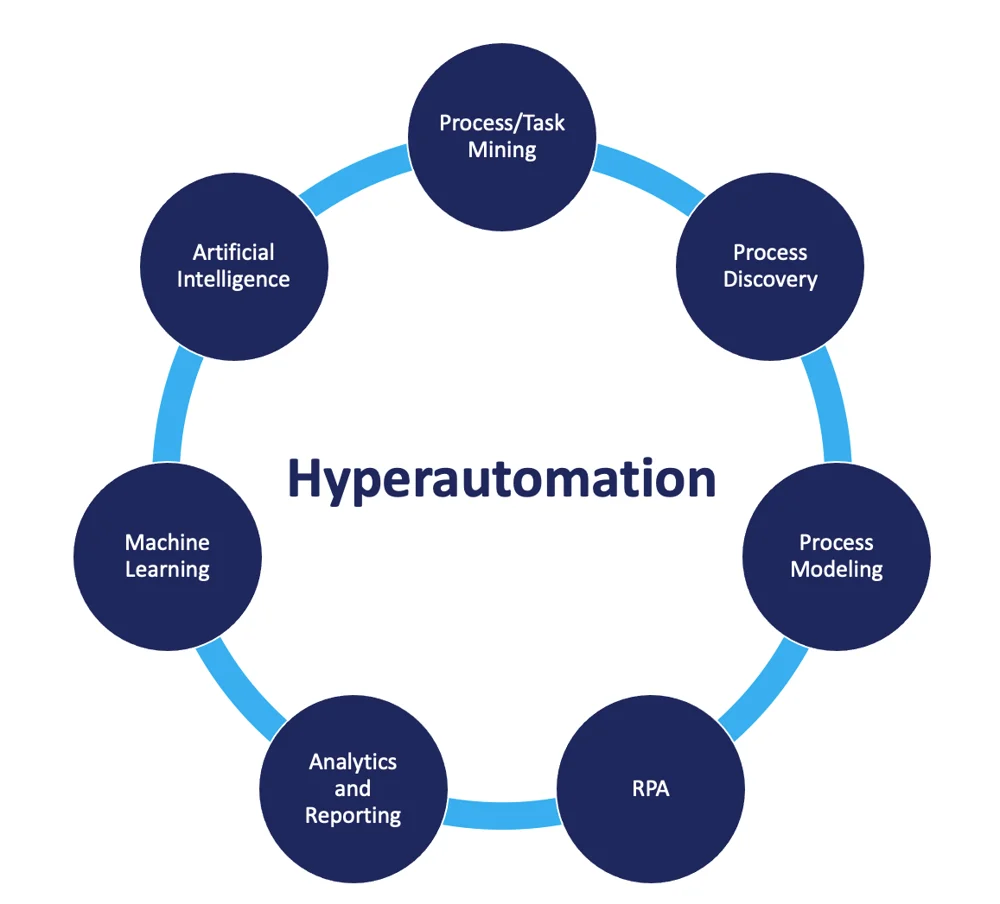1. What Exactly Is Hyperautomation, and Do I Need It?
Hyperautomation means using a mix of technologies like RPA, AI, low-code tools, and process mining to automate everything that can be automated.
Instead of relying on a few bots, you build a system that can:
- Discover which tasks are slowing you down
- Use the right tech to automate them intelligently
- Track performance and adapt over time
It’s like upgrading from a toolkit to a smart factory floor for your business processes.


2. How Is It Different from What We're Already Doing with Automation?
Traditional automation might already be in place, but it often means:
- Manually identifying what to automate
- Using tools that only work in silos
- Struggling to scale as operations grow
Hyperautomation changes that by:
- Integrating tools to work across departments
- Adding intelligence through AI and decision-making
- Designing workflows that continuously improve
In short, it’s smarter, faster, and more adaptable.
3. Where Are Businesses Seeing Real Results?
If you're trying to convince leadership or your team why this matters, look here:
- Finance: Invoices processed in minutes, not hours
- Customer Experience: Onboarding workflows without manual follow-up
- Supply Chain: Real-time logistics updates and cost optimization
- HR: Automated recruiting and employee support
- Reporting: Clean data auto-fed into dashboards without Excel wrangling
If your daily tasks involve clicks, checks, or data cleaning,hyperautomation could already help.
- Integrating tools to work across departments
4. How Does This Actually Help My Business or Career?
- For Teams: Eliminate bottlenecks, boost accuracy, and do more with less
- For Leaders: Align operations with strategy instead of firefighting
- For Professionals: Learning how to map and optimize workflows makes you the go-to expert
This isn’t just another tool,it’s a shift in mindset and skillset. And it puts you ahead.
5. What Should I Do First If I’m Interested?
You don’t need to automate everything overnight. Start by:
- Mapping the most repetitive parts of your job or team’s workflow
- Exploring RPA or low-code tools that can automate pieces quickly
- Talking to internal IT or automation experts about integration potential
- Keeping an eye on data quality,because bad inputs ruin smart systems
Take one small process. Automate it. Then scale from there.
Conclusion
Hyperautomation isn’t about replacing jobs. It’s about removing roadblocks so your skills, team, and tools can work at full capacity.
If you want to be the person who introduces smarter systems, improves how work gets done, and leads change,hyperautomation is your toolkit.
To keep learning how to apply it in real businesses, grow your automation skillset, and get ideas you can actually use, subscribe to our newsletter for weekly tips that fit your goals.



